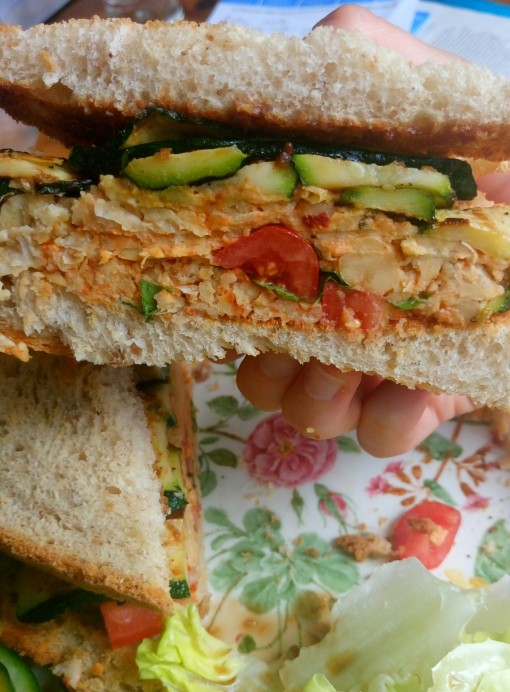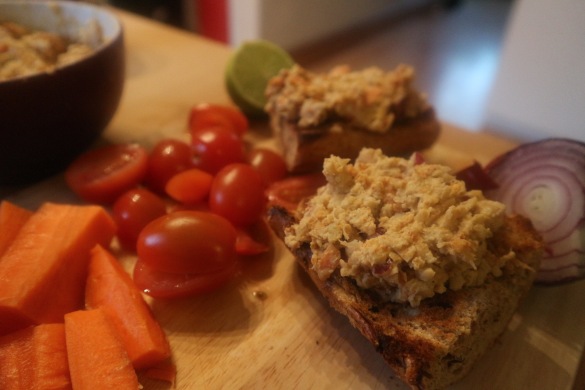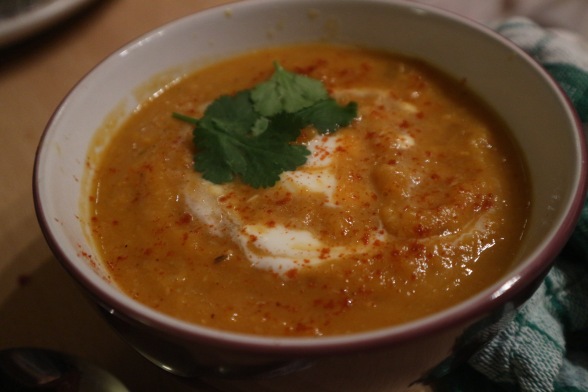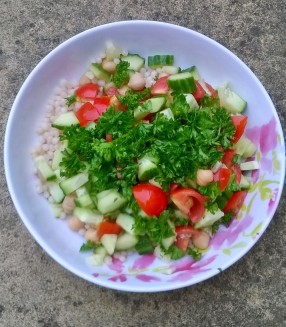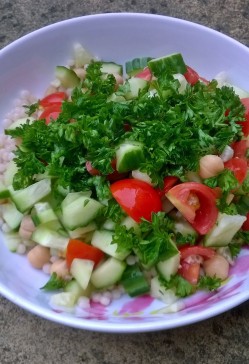When most people hear the word salad, they think of limp lettuce and low-fat dressing. When I contemplate salad, I picture a big bowl of assorted veg on a grain. A salad for me isn’t a satiating meal without an accompanying carb, be it rice, pasta, or quinoa. On the other hand, lunchtime carbs can induce mid-afternoon energy drops for some people. If that’s you, then make sure you’re stocking up on carbohydrates for breakfast!
This salad is one you can eat for lunch or dinner, and pack in a whole lot of nutrients. It’s full of flavour, with both bite and soft textures.
To serve one portion, you’ll need:
- 75g dry couscous. (I didn’t weigh mine, and ended up with a huge pile as a result. Remember that this stuff expands!)
- 5 or 6 closed cup mushrooms, or half a pack of button mushrooms
- One small / half a large courgette
- Half a can chickpeas
- Half a small red onion
- Handful of parsley
- 1/2 tsp paprika
- Pinch of chilli flakes
- 1/2 tsp dried rosemary
- Salt and pepper
- 1 tsp vegetable stock
- Olive oil.
Begin by preheating the oven to 180C, and slicing the courgettes and mushrooms. Place the courgette in one tray, drizzle with oil, season, and sprinkle over rosemary. Give everything a stir to coat, and place in the oven for 20-25 minutes.
Slice or halve the mushrooms, depending on size, and put in another tray with sliced onions. Drizzle with more oil, season, and add paprika and chilli flakes. Slide into the oven underneath the courgettes. (It’s better to roast mushrooms separately, as they tend to release water when cooked – which can make everything else in the tray soggy.)
Meanwhile, place the couscous in the bowl you intend to eat out of, and pour enough boiling water over to cover by 1cm. Add a tsp of vegetable stock, stir well, and place a tea towel over the top. Leave to absorb for ten minutes.
Chop the parsley, and drain the chickpeas. Feel free to prepare other ingredients to add, such as chopped avocado, pumpkin seeds, or tomato.
Fluff up the couscous with the fork – if it is still dry, add a little more water. When the vegetables are cooked and tender, remove from the oven and add to the couscous with the beans and parsley. Preferably eat in the sunshine!
